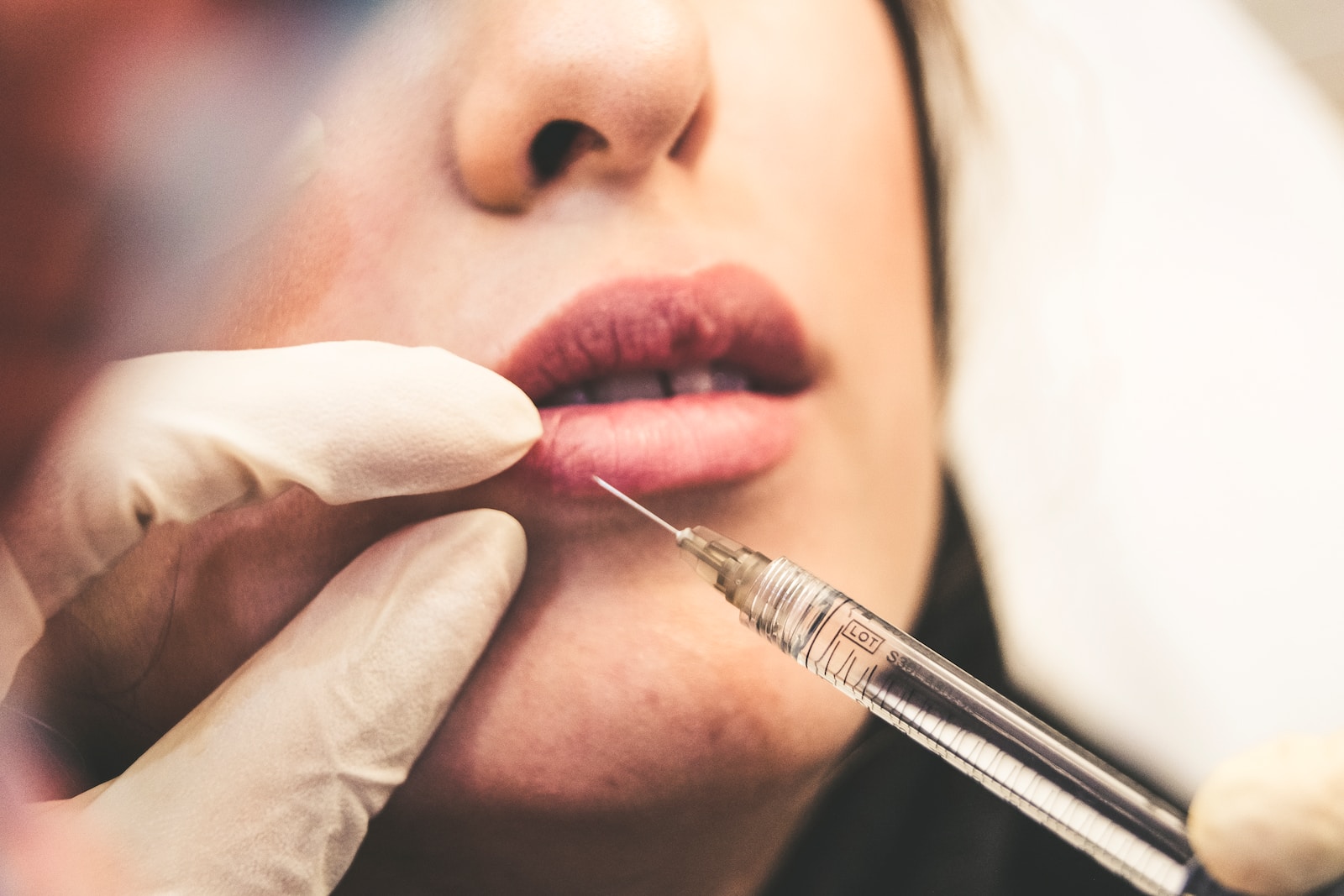Understanding Alpha Hydroxy Acid (AHA) and Glycolic Acid: Definitions and Differences
Alpha Hydroxy Acid (AHA) and Glycolic Acid are both derivatives of hydroxy acids, popularly employed in skincare products for their exfoliating prowess and their ability to enhance skin appearance. While AHA is a blanket term for alpha-hydroxy acid, Glycolic Acid is a specific subtype of AHA.
These water-soluble acids, hailing from sugary fruits, function by shedding the surface layer of the skin, thus promoting the development of fresh skin cells. AHAs, including Glycolic Acid, are usually preferred for normal to dry and sun-damaged skin because of their water solubility.
In contrast, beta-hydroxy acid (BHA), being oil-soluble, can permeate through the sebum and oils on the skin’s surface. While AHAs like Glycolic Acid exfoliate at the skin’s surface level, BHAs like salicylic acid can penetrate pores, making them more suitable for oily skin types.
Ultimately, the primary distinction between AHA and Glycolic Acid is their particular chemical composition. Glycolic Acid is a variant of AHA, and while both AHAs and BHAs are potent exfoliants, their solubility in water or oil determines their capability to infiltrate the skin and address specific skincare issues.
Glycolic Acid: An AHA Subtype and Its Unique Properties
Glycolic acid, a water-soluble alpha hydroxy acid (AHA) derived from sugar cane, is widely regarded as one of the most effective AHAs in skincare. This ingredient is celebrated for its potent exfoliating properties, making it a go-to choice for enhancing skin texture and appearance.
Glycolic acid’s key advantage is its capability to discard the top layers of dead skin cells, thus promoting a more refined and radiant complexion. It also has the potential to reverse sun damage, making it an ideal ingredient for those seeking to address hyperpigmentation or sunspots.
Furthermore, glycolic acid has demonstrated its dermal influence by stimulating collagen-remodeling cells, which can help reduce the visibility of fine lines and wrinkles. Additionally, it possesses hydrating properties and encourages skin regeneration by increasing the production of substances that support this process.
Glycolic acid is viewed as a gentler alternative to other AHAs, making it suitable for individuals with sensitive skin. It offers comparable benefits to other AHA acids like citric, lactic, or malic acid but potentially with less irritation.
In conclusion, glycolic acid, as a type of AHA, is a versatile ingredient with exfoliating, hydrating, and anti-aging properties. Its effectiveness in enhancing skin texture, diminishing the appearance of sun damage, and promoting collagen production makes it a popular choice in skincare products.
Exploring Other Types of AHAs: Spotlight on Lactic Acid
Beyond glycolic acid, other types of AHAs are commonly used in skincare products. Lactic acid is one such AHA, found in dairy products and fermented vegetables. It is known for its gentle exfoliating properties and is often recommended for individuals with sensitive skin.
Similar to glycolic acid, lactic acid assists in removing dead skin cells and promoting cell turnover, resulting in smoother and brighter skin. It also enhances the skin’s moisture retention, making it an excellent choice for individuals with dry skin.
Other AHAs frequently used in skincare products include malic acid, citric acid, and tartaric acid. These AHAs, often referred to as fruit acids, are derived from fruits such as apples, lemons, and grapes.
When comparing the effectiveness of various AHAs, factors such as the acid’s concentration, pH level, and individual skin type are important considerations. While glycolic acid and lactic acid are two of the most researched AHAs, other types of AHAs can also provide beneficial effects for the skin.
Unveiling the Benefits of AHAs: Exfoliation and Softening
In the debate of alpha hydroxy acid vs glycolic acid, it’s crucial to acknowledge the numerous benefits of applying AHAs to the skin. Their key advantage is their ability to exfoliate the skin by dissolving the bonds that hold dead skin cells together, resulting in a glowing, dewy, and smoother complexion.
AHAs, including glycolic acid, are known to improve skin texture and reduce acne. They gently remove dead skin cells, revealing fresher and healthier-looking skin underneath. This exfoliation process stimulates the growth of new cells, leading to a more youthful appearance.
Notably, AHAs have anti-aging effects, such as smoothing fine lines and wrinkles. They increase the synthesis of glycosaminoglycans and promote the thickening of the skin, which can improve the appearance of wrinkles.
Furthermore, AHAs are particularly beneficial for individuals with dry skin, sun damage, dullness, and aging concerns. They help to moisturize and soften the skin, addressing issues commonly associated with these skin types.
In addition, AHAs have the potential to prevent future clogs and reduce the formation of acne. Their unique exfoliating properties can help to loosen and remove existing clogs while minimizing the likelihood of new ones forming.
Overall, AHAs, including glycolic acid, are versatile skincare ingredients that offer a range of benefits. From exfoliation and improved skin texture to acne reduction and softening, incorporating AHAs into your skincare routine can help achieve a healthier and more youthful-looking complexion.
Lactic Acid vs Glycolic Acid: A Comparative Study of Effectiveness and Moisturizing Properties
Lactic acid and glycolic acid, both esteemed members of the Alpha Hydroxy Acids (AHAs) family, are widely employed in skincare products for their exfoliating merits. However, they display certain notable differences when it comes to effectiveness and moisturizing properties.
Glycolic acid, derived from sugar cane, has a smaller molecular size compared to lactic acid, enabling it to penetrate deeper into the skin. This makes it more effective at removing dead skin cells, unclogging pores, and enhancing skin texture. Conversely, lactic acid, sourced from milk, is a gentler option providing a milder exfoliation combined with added moisturizing benefits.
While both acids effectively exfoliate the skin, lactic acid has a slight advantage in terms of moisturization. Both the l( ) and d(-) forms of lactic acid are superior moisturizers when fully or partially neutralized. This makes lactic acid an ideal choice for individuals with dry skin, as it not only exfoliates but also helps to hydrate and soften the skin.
In conclusion, while glycolic acid is more effective in penetrating the skin and providing a deeper exfoliation, lactic acid offers a gentler exfoliating experience with superior moisturizing properties. The choice between the two acids ultimately depends on individual skin concerns and preferences.
Jen is Cosmotality's science expert and a passionate beauty blogger with an affinity for beauty molecules. Having a credible background in biochemistry, her keen insight into ingredients and their effects on skin has positioned her as an authority in the beauty blogging sphere. Her approach blends scientific understanding and aesthetic appeal, offering her followers both a learning experience and beauty inspiration. Guiding through the labyrinth of beauty products with her practical advice and unbiased reviews, Jen ensures everyone benefits from natural and scientific skincare approaches.
Her love for beauty and skin care science doesn't stop with blogging; Jen frequently conducts beauty webinars, sharing on-trend products and the latest skin science research. In her eyes, knowledge truly is the ultimate beauty secret. Her inspirations stem from a desire to demystify beauty jargon, making science-backed beauty accessible to all.




